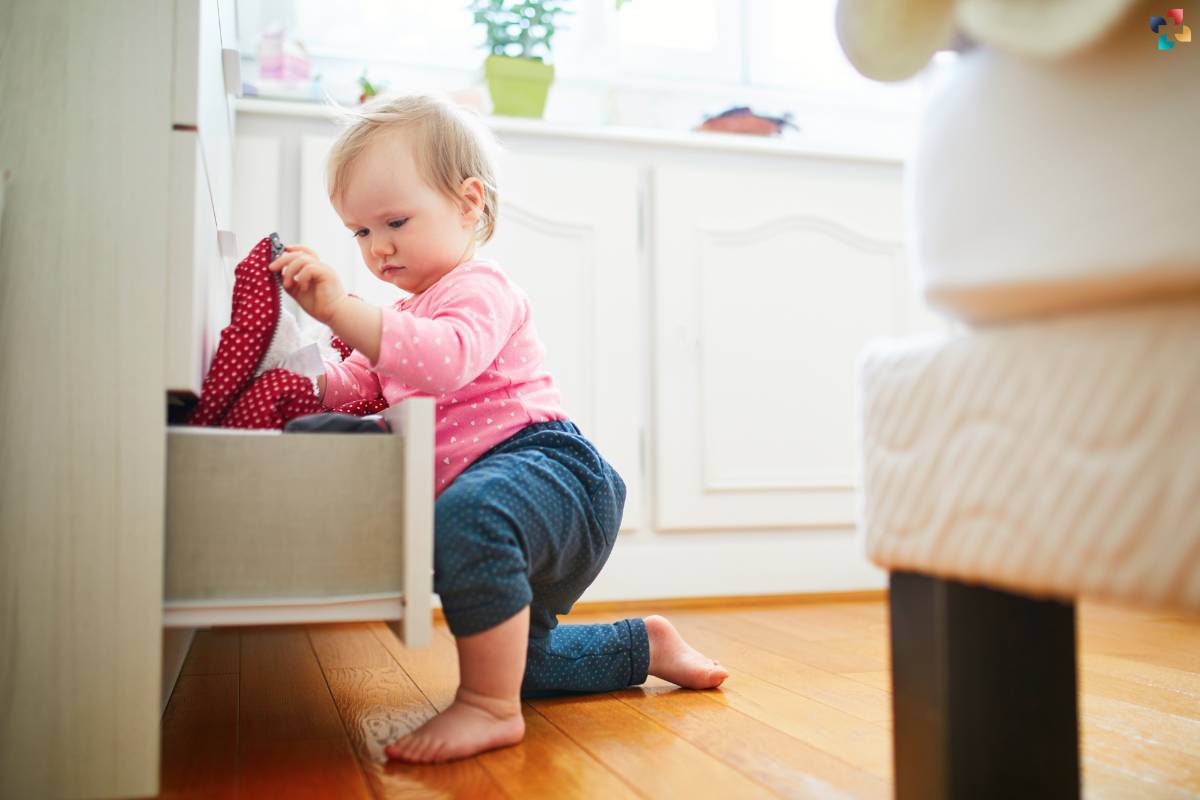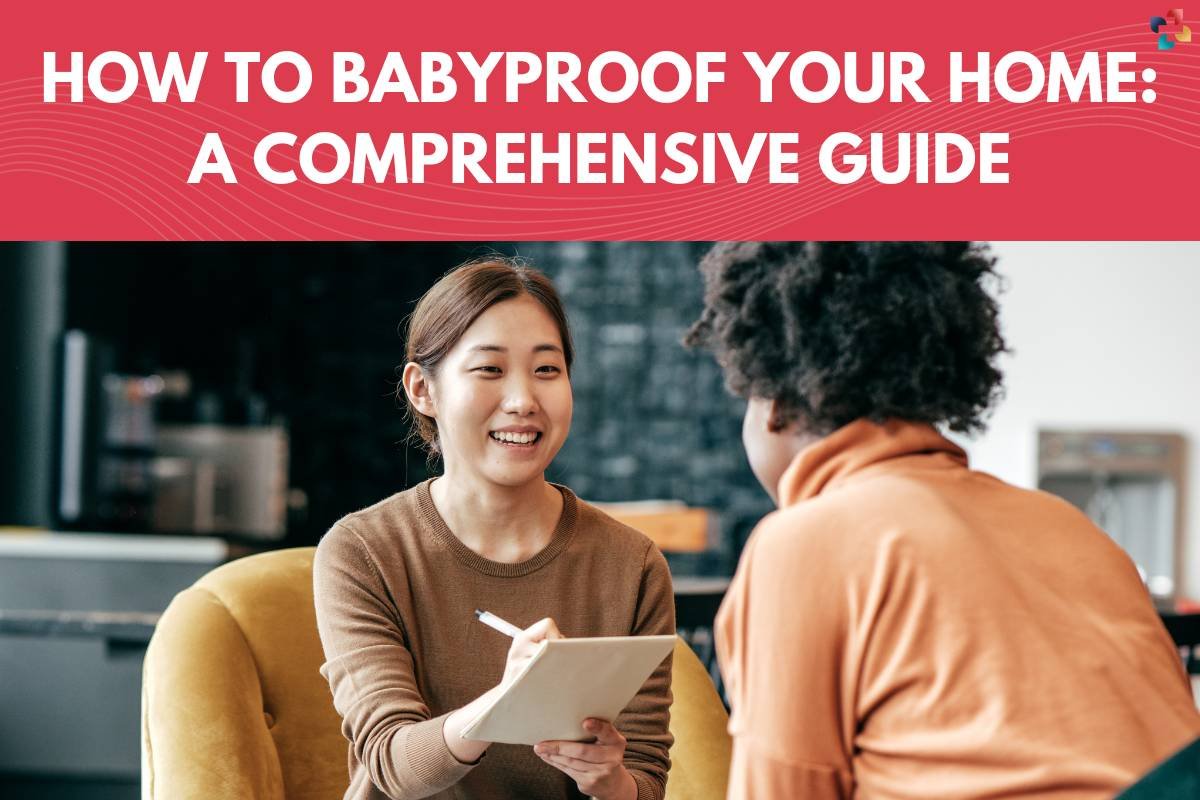It’s a wonderful and happy occasion to welcome a new baby into your home, but it also means a lot of new duties, one of which is babyproofing your home. Your child’s safety in your home should be your first concern. We’ll cover a wide range of babyproofing topics in this extensive guide, providing you with insightful advice and practical ideas to help you provide a safe and secure space for your child.
The Importance of Babyproofing Your Home
Babyproofing, also known as childproofing, is the process of making your home safe for infants and toddlers. Babies are naturally curious and love to explore their surroundings. However, their lack of coordination and understanding of potential dangers can lead to accidents. Babyproofing helps prevent common household hazards and reduces the risk of injuries, giving you peace of mind as a parent.
Babyproofing Checklist
To babyproof your home effectively, it’s essential to go through a comprehensive checklist. Here are some key areas and items to consider:
- Electrical Outlets: Cover all accessible electrical outlets with safety plugs or outlet covers to prevent curious fingers from making contact.
- Cabinet and Drawer Locks: Install childproof locks on cabinets and drawers, especially in the kitchen and bathroom, where hazardous items and sharp objects are typically stored.
- Stair Gates: Use safety gates at the top and bottom of staircases to keep your baby from falling down the stairs.
- Window Guards: Secure windows with window guards or stops to prevent falls.
- Furniture Anchors: Anchor heavy furniture, such as bookshelves and dressers, to the wall to prevent tip-overs.
- Door Stoppers: Use door stoppers to avoid pinched fingers and hands.
- Edge and Corner Protectors: Apply cushioned protectors to sharp furniture edges and corners to prevent injuries.
- Toilet Locks: Install toilet locks to keep your child from playing with water or putting objects into the toilet.
- Blind Cord Safety: Tie up or secure window blind cords to prevent strangulation.
- Fireplace Safety: Use a safety gate or screen to block access to the fireplace.
Babyproofing Your Home Room by Room
To create a safe home for your baby, it’s important to address each room’s unique challenges:
1. Kitchen:

- Store sharp objects, cleaning supplies, and chemicals out of reach or in locked cabinets.
- Use stove knob covers to prevent your child from turning on burners.
- Keep hot beverages and food out of reach.
2. Bathroom:
- Store medications, cleaning supplies, and toiletries in locked cabinets.
- Adjust the water heater to a safe temperature to prevent scalding.
- Install toilet locks to keep your child from accessing the toilet.
3. Living Room:
- Secure heavy furniture and TVs to the wall.
- Use corner protectors on coffee tables and sharp-edged furniture.
- Cover electrical outlets and cords.
4. Bedroom:
- Ensure the crib meets safety standards and is free from suffocation hazards.
- Secure any heavy or tall furniture to prevent tipping.
- Keep small objects, like jewelry, out of reach.
5. Nursery:
- Use cordless window coverings to eliminate strangulation hazards.
- Secure bookshelves and wall-mounted decorations.
- Keep baby monitors and cords away from the crib.

6. Playroom:
- Store toys in easily accessible bins to prevent climbing accidents.
- Use cushioned flooring or rugs to soften falls.
- Secure heavy or tall furniture to the wall.
Top Babyproofing Products
When it comes to babyproofing products, there is a wide range available to suit your needs and budget. Here are some top products to consider:
- Safety Gates: These are essential for blocking staircases or keeping your child out of certain areas.
- Outlet Covers: Cover all accessible electrical outlets with childproof covers.
- Cabinet Locks: Install locks on cabinets and drawers to keep dangerous items out of reach.
- Corner Protectors: Use these to cushion sharp edges on furniture.
- Toilet Locks: Prevent your child from playing in the toilet with a lock.
- Furniture Anchors: Secure heavy furniture to the wall to prevent tip-overs.
- Door Stoppers: These prevent pinched fingers and hands when doors close.
- Window Guards: Install window guards to prevent falls from open windows.
- Blind Cord Winders: Wind up or secure window blind cords to prevent strangulation.
- Stove Knob Covers: Use these to prevent your child from turning on burners on the stove.
Other Babyproofing Considerations
In addition to the standard babyproofing checklist, there are other factors to consider:

- Chemicals and Household Products: Store cleaning supplies, chemicals, and medications in high, locked cabinets or drawers.
- Small Objects: Keep small items like coins, buttons, and jewelry out of reach to prevent choking hazards.
- Plants: Remove toxic plants from your home or place them out of reach.
- Pets: Teach your pets to adjust to the presence of a baby and always supervise interactions.
- Cords and Cables: Secure cords and cables out of reach to prevent strangulation or electrical hazards.
Stay Informed and Updated
Babyproofing doesn’t end once you’ve covered the basics. As your child grows and becomes more mobile, their ability to access potential hazards will change. Stay informed about new safety products and adjust your babyproofing strategy accordingly. Regularly inspect your home for potential dangers and make necessary updates.
Teaching Safety
Babyproofing your home is not just about creating a safe environment; it’s also about teaching your child about safety. As your child grows, begin to educate them about potential dangers, what is off-limits, and why certain rules are in place. Encourage them to be cautious and responsible.
Conclusion
The first step in guaranteeing your child’s safety and well-being is to babyproofing your home. Through the use of babyproofing goods and addressing possible hazards, you may create a safe and secure environment in which your baby can explore and develop. Recall that babyproofing is a continuous process that changes as your child grows, so be on the lookout and make necessary updates to your home to meet their evolving requirements. Babyproofing your home gives you, as a parent, peace of mind in addition to protecting your child.
Also Read: Why You Should Track These 6 Important Vital Signs at Home?











